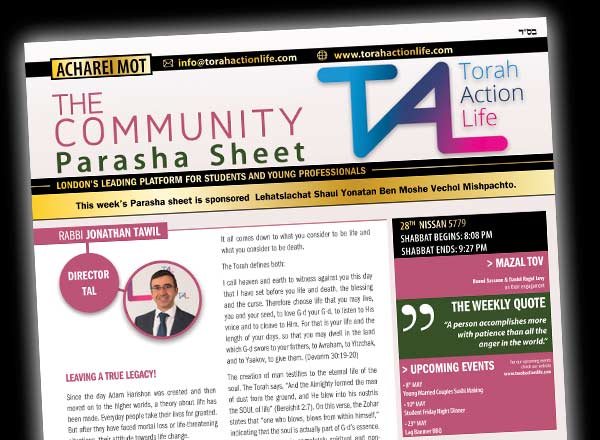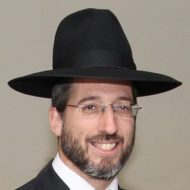
Some time ago, a woman I know gave birth for the first time to a baby boy through a Caesarian-Section. Following the Brit I was asked to calculate when the Pidyon HaBen would fall. My attempt to explain to the mother that her baby could not experience a Pidyon HaBen because she had not given birth ‘naturally’ was not exactly well received. The fact that her baby could not have a Pidyon HaBen was described as ‘discriminatory’. And it got me thinking: why indeed does the Torah mandate a Pidyon HaBen ritual only for a baby boy born through a ‘peter rehem’,[1] opening of the womb, and not through a Cesarean?
If we consider the process of a woman bringing a child into this world we will find something quite paradoxical. One who walks past a delivery room hearing all the screams and shouts and not knowing that this is a room in which women bring babies into the world, would think that the person inside is about to die. And in truth, a woman giving birth is close to death. Although today it is relatively rare for a woman to die during childbirth, historically it was not uncommon. But this is the way the human body has been incredibly designed. What looks and sounds like death is actually life. A woman who looks and sounds like she is experiencing the pangs of death is actually bringing life in to this world.
Indeed, this is a microcosm of the natural history of the world. Often the very same thing that looks like destruction and devastation ends up being the very same force that generates life. Pesach is a classic example. Egypt is described as being the ‘Iron Crucible’.[2] The first mention in the Torah of us as a nation is at the beginning of the book of Shemot[3] introducing us to the Israelite persecution at the hands of the Egyptians. It was all gloom and darkness. It seemed there was no hope. But from that very same darkness sprouted redemption: leaving Egypt, becoming a nation of G-d and experiencing the Divine Revelation at Sinai. A few weeks ago we celebrated on Purim the fact that from the clutches of annihilation we were transferred overnight to have immense political clout in Persia. But perhaps the greatest example of this concept in Jewish history is the Holocaust. It was easy to write off Jewish continuity in 1945. But astonishingly, just three years later, after being exiled for over two millennia, the Jewish people returned to their homeland.
This is the reality of the world we live in. A seed is sown in the ground. In order to sprout, it must first rot. But then miraculously it grows into a budding tree; a source of life of new fruit. Thomas Kuhn in his book The Structure of Scientific Revolutions demonstrates this point with science. Scientific Discovery, he argues, begins with the awareness of an anomaly – the recognition that nature has violated the expectations that govern normal science. The emergence of a new theory is generated by the persistent failure of the puzzles of normal science to be solved as they should. The failure of existing rules is the prelude to a search for new ones. When everything makes sense and there are no anomalies then there is no need for scientific discovery.
The rite of Pidyon HaBen is to commemorate G-d‘s intervention in Egypt in ensuring that although the Egyptians firstborns were killed, the Jewish firstborns were spared. How were the Egyptian firstborns punished and the Israelite firstborns saved? This, we read in the Hagadah, was not through any emissary but directly through G-d. There was a clear manifestation of G-d’s involvement in the tenth plague, the plague through which our redemption began. This was G-d Himself behind the ‘natural miracle’ of life. G-d Himself transforming a century of slavery and servitude into the beginning of a new nation, free to worship G-d.
A natural birth through the womb without human intervention represents the natural miracle and lifecycle of life. The mother was so close to dying and yet she was spared, and from that near death experience more life was created. That is Egypt: G-d’s direct and immediate involvement in transforming darkness into light. Any other form of birth that involves human intervention breaks the ‘natural miracle’ of birth. Such a child’s birth is an expression of nature not working as it was supposed to and human beings saving the day. As such it does not express the same direct connection to the miracle of ‘birth’ that we experienced on Pesach night in which G-d Himself brought about the Redemption without the instrumentality of men.[4]
To be sure, I am in no way suggesting that a Cesarean birth is in any way less special than a natural birth. But it certainly is a different type of birth. It is one that requires human instrumentality as opposed to a complete natural order of birth. In a way, the birth of such a child expresses something deeper and more powerful: that G-d granted the miracle of healing to humans to varying degrees. But that is not Pesach but Shavuot which celebrates human achievement. And so perhaps this is why Pidyon HaBen, which is to remind us of Egypt, only applies to a baby born through a natural birth.
This is a powerful idea and one we should think of during the course of Pesach. Pesach essentially is G-d gratuitously taking darkness and transforming it into light. It is the light that one sees from the sunrise, where the sun appears in the horizon extinguishing the doubts and dangers of the night.
And this is why the festival of Pesach gives us such hope. Pesach reminds us, exactly as we say in the Hagadah, that in every generation attempts are made to destroy us. Anti-Semitism is nothing new. But, as history has proven time and time again, it is from these dark moments in history that redemption sprouts and we see that the darkness itself was the beginning of something new. And that out of uncertainty, fragility, difficulty and despair, emerge redemption, liberation and freedom.
Hag Sameach
[1] Shemot 13:2
[2] Devarim 4:20
[3] Shemot 1:9
[4] In Kabbalistic thought termed as It’aruta Dil’ela – ‘Heavenly awakening’.







